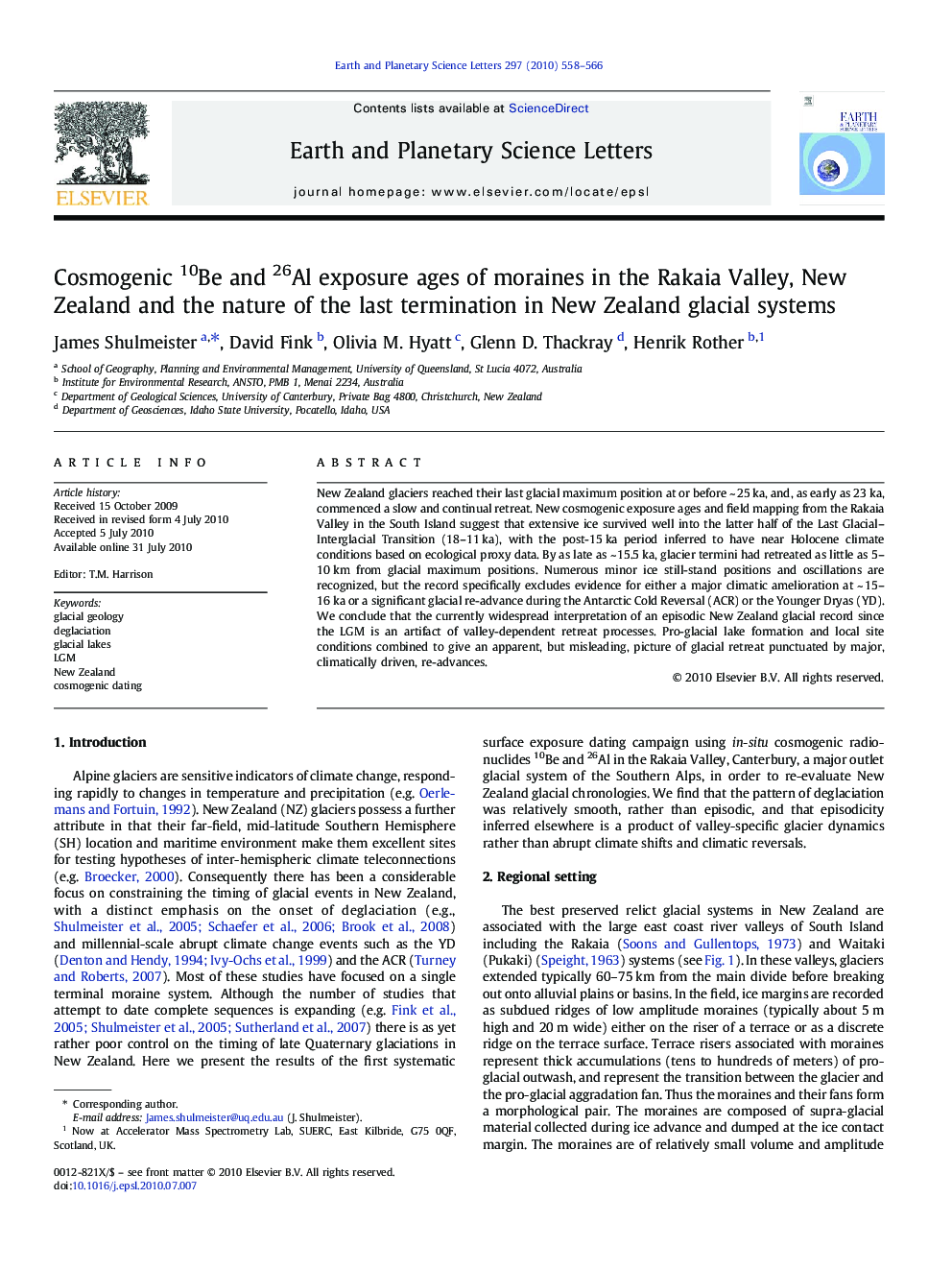| Article ID | Journal | Published Year | Pages | File Type |
|---|---|---|---|---|
| 4678384 | Earth and Planetary Science Letters | 2010 | 9 Pages |
New Zealand glaciers reached their last glacial maximum position at or before ~ 25 ka, and, as early as 23 ka, commenced a slow and continual retreat. New cosmogenic exposure ages and field mapping from the Rakaia Valley in the South Island suggest that extensive ice survived well into the latter half of the Last Glacial–Interglacial Transition (18–11 ka), with the post-15 ka period inferred to have near Holocene climate conditions based on ecological proxy data. By as late as ~ 15.5 ka, glacier termini had retreated as little as 5–10 km from glacial maximum positions. Numerous minor ice still-stand positions and oscillations are recognized, but the record specifically excludes evidence for either a major climatic amelioration at ~ 15–16 ka or a significant glacial re-advance during the Antarctic Cold Reversal (ACR) or the Younger Dryas (YD). We conclude that the currently widespread interpretation of an episodic New Zealand glacial record since the LGM is an artifact of valley-dependent retreat processes. Pro-glacial lake formation and local site conditions combined to give an apparent, but misleading, picture of glacial retreat punctuated by major, climatically driven, re-advances.
